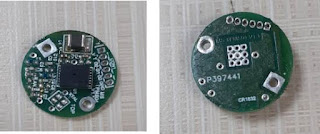How to Choose the Right Reed Switch for Your Application?
While picking the right reed switch, you must evaluate it across a few essential aspects, including its pole and throw switch configurations, physical size, electrical specifications, etc. Let's delve into each to know how to pick the best reed switch.
1. Pole and Throw Configurations
Littelfuse reed switches are available in four configurations, including,
- • Single pole single throw (SPST): It builds or breaks the connection of a single conductor in a single branch circuit. It has two terminals and is called a "Single-Pole" Switch.
- • Single pole double throw (SPDT): It builds or breaks the connection of a single conductor with any one of the two other single conductors. It has three terminals and is termed a "Three-Way" Switch.
- • Double pole single throw (DPST): It builds or breaks the connection of two circuit conductors in one branch circuit. Usually, it has four terminals.
- • Double pole double throw (DPDT): This six-terminal switch builds or breaks the connection of two conductors to two separate circuits.
A normally opened (NO) (changeover type) switch has contacts open or disconnected in their unactuated (normal) position.
On the other hand, a normally closed (NC) switch has contacts closed or connected in their unactuated (normal position).
2. Physical Dimensions
Littelfuse intelligently designs all its reed switches to make them suitable for multiple applications. However, it would help to check dimensions that include the total diameter, total length including leads, and the glass encapsulated length.
The dimensions in which Littelfuse manufactures reed switches include 7mm, 10.16mm, 12.70mm, 14.73mm, 15.24mm, 16mm, 22.86mm, and 50.80mm, etc.
3.Electrical Particulars
Some essential factors to look for in this regard include switching power, switching voltage, breakdown voltage, and switching current.
Littelfuse manufactures low-power and high-power reed switches with switching power that ranges from 5W to 100W, switching voltage 170 Vdc, 120 Vac to 1000 Vdc, 700 Vac. The breakdown voltage** (Vdc - min.) is in the range of 175 to up to 2000. On the other hand, the switching current (A) includes 0.5 Adc, 0.35 Aac to 0.5 Adc, 0.35 Aac.
4.Sensitive Value
Magnetic sensitivity is also called AT value. It is a significant factor that determines the sensitivity of the reed switch. The lesser the AT value, the higher the sensitivity. Littelfuse's low and high-power reed switches have magnetic sensitivities ranging from 6-10, 10-25, 10-30, 17-23, 22-33, 42-83, 50-80, etc.
Read More at: https://www.millenniumsemi.com/products/reed-switch



Comments
Post a Comment